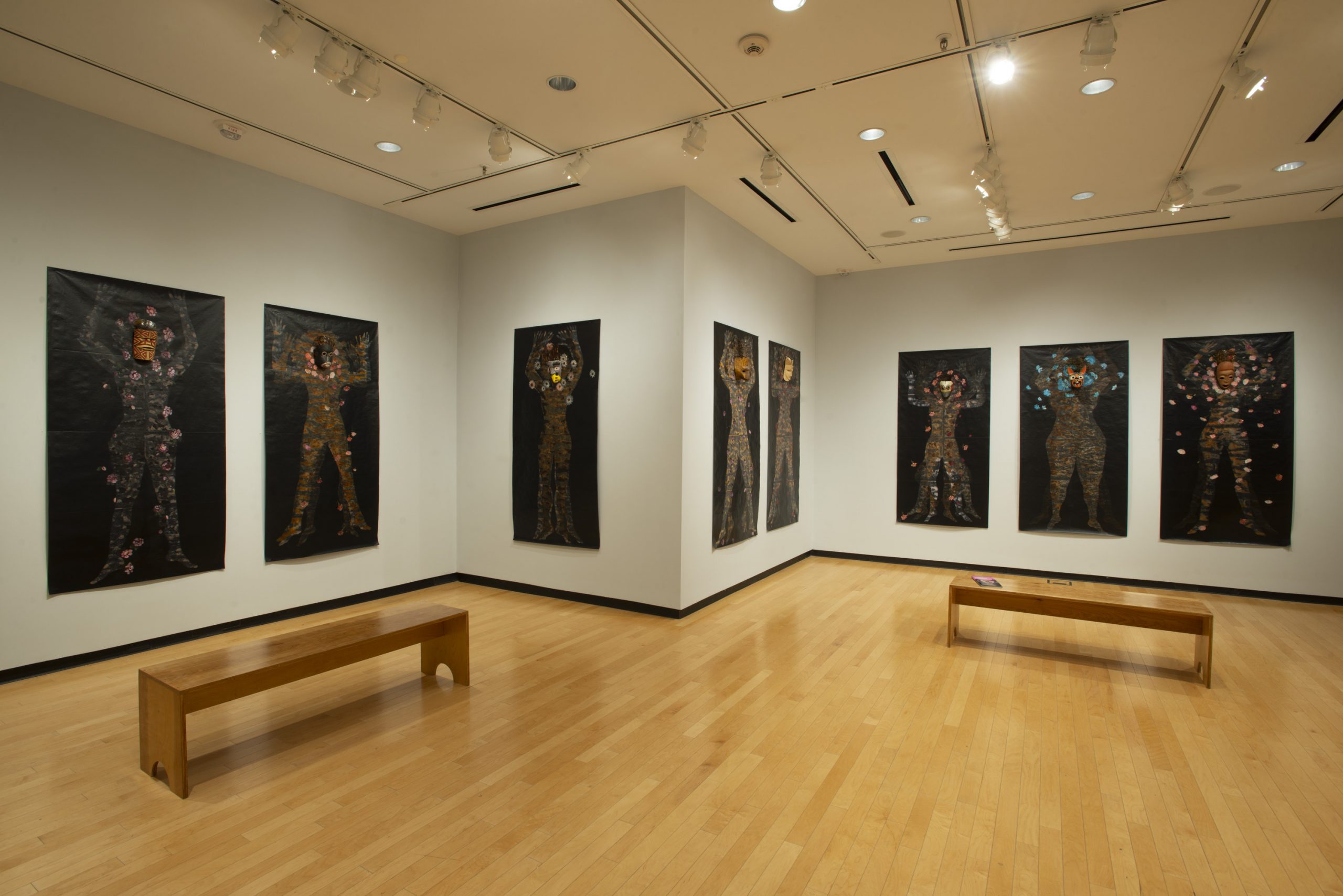


Our summer intern Dionah took time to reflect on the connective themes between the to current exhibitions, Kukuli Velarde: CORPUS and Nancy Friedemann-Sánchez: Pinturas de Casta and the Construction of American Identity. While the artworks in these exhibitions are visually very different, Dionah shares how both artists use honesty to discover other parts of the world and the effect on attempting to diminish one’s past brings about a stronger and longer fight for preservation.
The works of artists Nancy Friedemann-Sánchez and Kukuli Velarde explore the pre-existing and existing nature of both Colombian and Peruvian cultures in their respective exhibitions, titled Pinturas de Casta and the Construction of American Identity and CORPUS. Though from different cultural backgrounds, there is an apparent harmony among the works of these two women. Both artists show vast similarities and delve into stories that are undoubtedly akin, reflecting one another when viewing their artwork. Throughout these two exhibitions, there is a focus on identity, exposure, culture, and preservation, with both artists emanating these messages with bold, playful, and powerful delivery.
As you step foot in the doors of the galleries, there is a bright welcome from the first smiling sculpture by Kukuli Velarde titled San Pedro. These ornate sculptures are named after Catholic saints and virgins that are commemorated during the annual Corpus Christi in Cusco, Perú. In Velarde’s installation, the sculptures also represent indigenous spiritual entities that survived under the guise of Catholicism – a celebration of mestizo identity. Velarde’s immense pride in her Peruvian culture is obvious with not only her distinct sculptures but the elaborate banners she commissioned to accompany them. Despite colonialism’s undermining of cultural identity that still is present today, these entities have survived with resilience and strength; characteristics vividly painted and molded throughout her exhibition.
Also “standing” in the face of oppression are the multi-layered casta paintings of Nancy Friedemann-Sánchez. Not only are they life-size, but they are adorned with flowers and extravagant masks that your eyes are invited into immediately. Because Spanish colonizers used to rank and categorize to constitute for the elucidation of whiteness in Latin America, Friedemann-Sánchez has used this same system to, like Velarde, loudly confront and reflect on the long-lived exploitation and discrimination of their people.
While Kukuli Velarde’s sculptures can be seen as expressive and intimate through the emotive faces and symbolic renderings, Nancy Friedemann-Sánchez’s life-size tracings of Latina bodies follow suit as they are positioned in the stance instructed by airport security, and wearing peinetas paired with the masks; suggesting vulnerability and power through identity.
In viewing both exhibitions, there is an evident feeling of being bare and seen, hence the camera shutters from CORPUS and the open poses of Friedemann-Sánchez’s Latina women. Both artists have done this on purpose to re-establish the ideals of culture and where they come from. By embracing their heritage, they both use this honesty to discover other parts of the world and the effect on how attempting to diminish one’s past brings about a stronger and longer fight for preservation.
When viewing these two brilliant artists’ exhibitions, I am reminded to take pride in where I have come from, especially of a culture that has been colonized for years. These women use their stories to embrace and stand in their truth to uncover the realities of how colonialism and culture has lasting effects on us and the world we live in. Throughout their art they advocate for being our full, transparent selves in a world where we are if not told, shown, to be everything but.